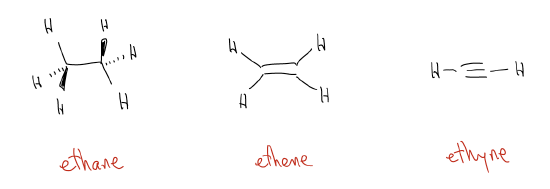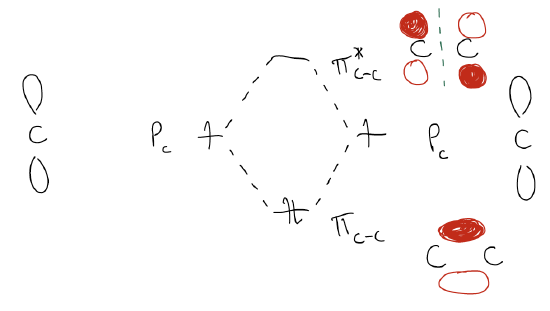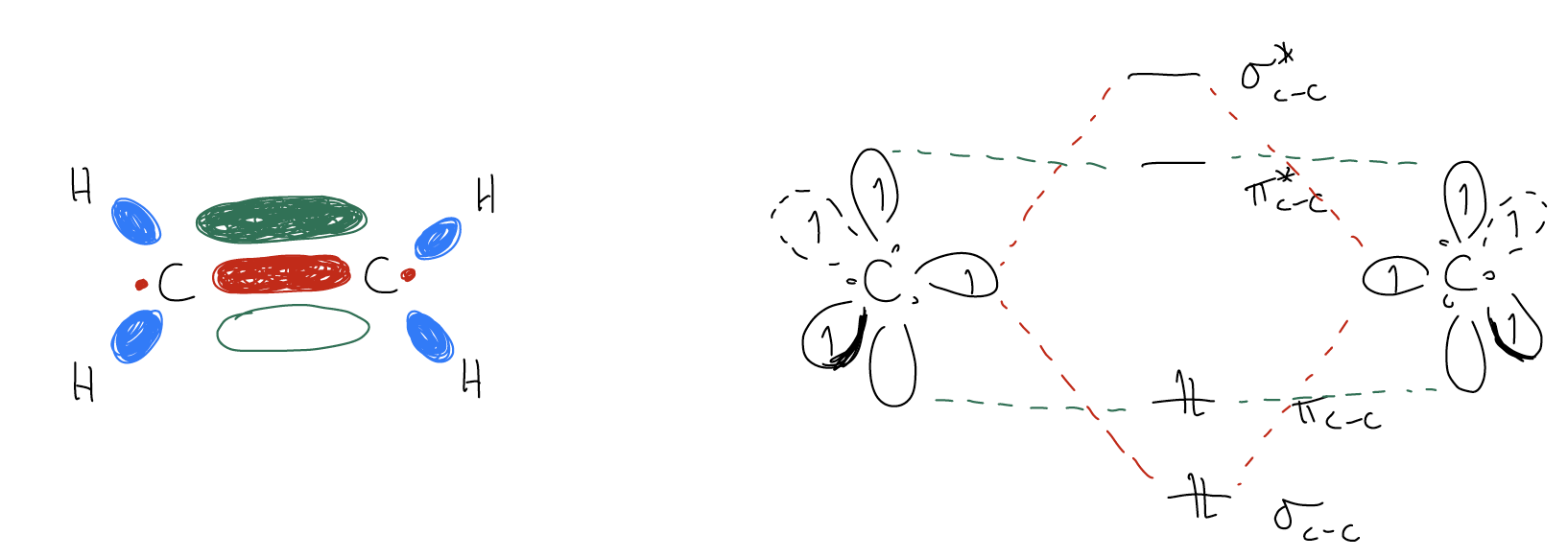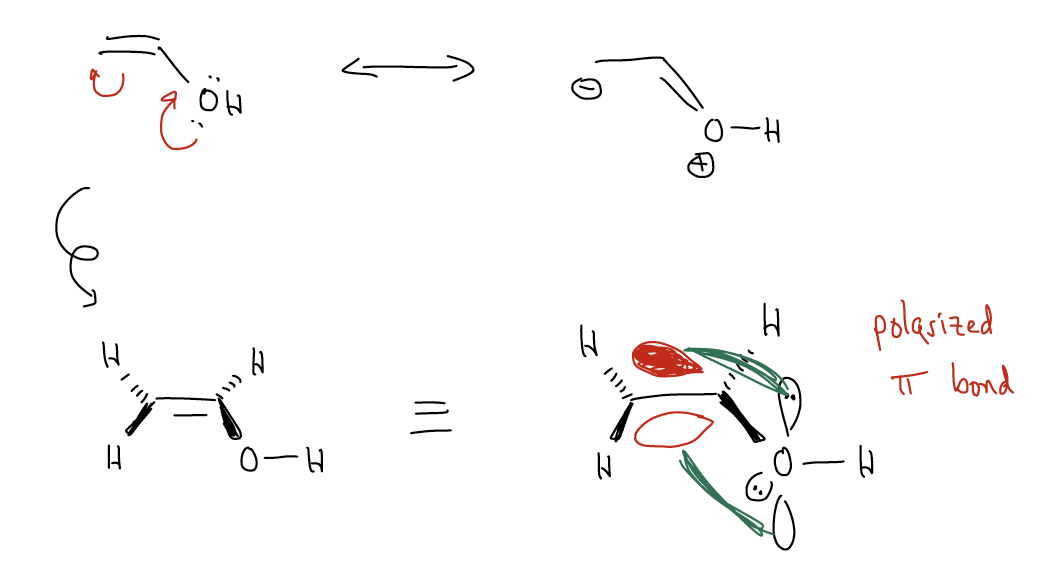2.3: Bonding in Symmetrical Hydrocarbons
- Page ID
- 319628
Consider, now, a molecular orbital diagram for the tetrahedral molecule methane, CH4. In order to describe the bonding, let us remember what types of atomic orbitals exist on carbon alone. According to Lewis theory, carbon has four valence electrons: two occupy the 2s orbital and one each occupy the 2px and 2py orbitals. When we mix all four atomic orbitals, we produce four sp3-hybridized atomic orbitals of equal energy, but slightly different shape.

Our net result is a carbon atom that looks like this, which has tetrahedral geometry:

If we now overlap each sp3 orbital with a 1s orbital from a H atom, we get 8 new orbitals: 4 new bonding \(σ_{C-H}\) and 4 new antibonding \(σ^{*}_{C-H}\). What about bonding in systems with higher oxidation states? For example, how can we describe the C-C bonding in ethane vs. ethene vs. ethyne?

Ethene: carbon atom is sp2-hybridized (3sp2 + 1 atomic p)

Overlap occurs between two sp2 orbitals to form a \(σ\) bond, but also between the two atomic p orbitals (p → \(π\)).

\(π\) orbitals are higher in energy than \(σ\) orbitals because there is weaker overlap (recall that \(σ\) bonds results from head-on overlap). Let’s put it all together, then:

When we draw an orbital diagram, we normally only draw the bonding orbitals. However, it will be important later to know where the antibonding orbitals lie. Also, don’t forget the bonds made from carbon to hydrogen. Unlike in methane, where an sp3 orbital and a 1s orbital overlapped to give a \(σ\) bond, we will now overlap an sp2 orbital with a 1s orbital to give a \(σ\) bond.
How about ethyne?

What happens when a heteroatom is attached to a \(π\) system? Well, the coefficients C1 and C2 change. We can see this from resonance structures that we can draw – any atom that has a formal charge will have a larger coefficient in the bonding \(π\) orbital.


